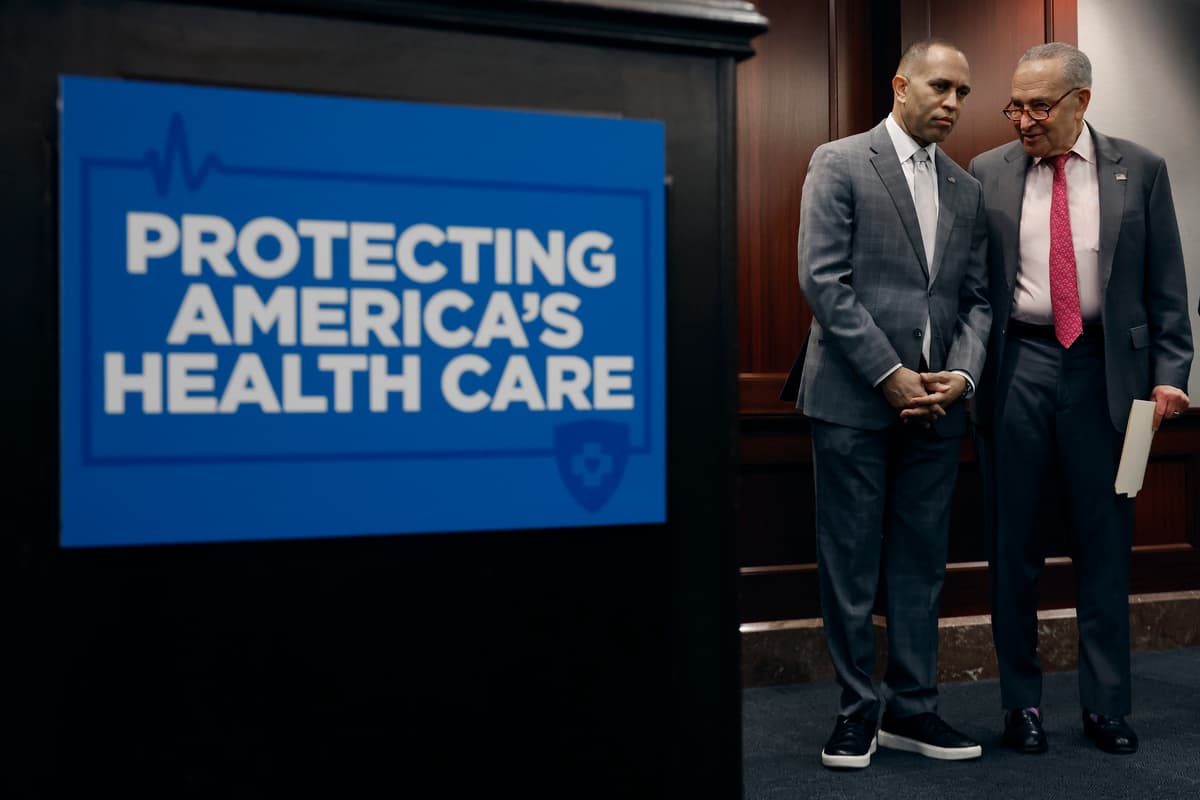The ongoing budget impasse in the United States has led to a government shutdown, primarily driven by Democratic leaders’ demand for various policy changes. Among these is their push to make permanent the expansion of Obamacare premium tax credits, often referred to as the “Biden Covid-19 credits.” This initiative aims to reduce health care costs by increasing funding to insurance companies, a strategy critics argue is fundamentally flawed.
Proponents of these subsidies contend they will help lower health care expenses. Yet, a closer examination reveals that the costs associated with extending these credits are significant. According to the Congressional Budget Office (CBO), making the Biden Covid-19 credits permanent could amount to approximately $410 billion over the next decade, including interest. The total expenditure over the same period is projected to reach $488 billion. These funds are likely to go directly to insurance companies, obscuring the true cost of coverage for consumers.
Rising insurance premiums remain a persistent issue, and subsidies alone will not address the underlying reasons for these increases. As reported by the Economic Policy Innovation Center, individual-market premiums are set to rise by about 18 percent by 2026. This surge is driven by several factors, including escalating medical care costs, shortages of healthcare professionals, and the high prices of specialty medications such as Ozempic. Notably, over half of this projected increase is attributed to medical cost pressures, while around 20 percent is linked to tariffs and other broader economic trends.
The integrity of the subsidy program has also come under scrutiny. The expansion during the Covid-19 pandemic has been associated with improper enrollments and instances of “phantom” coverage. In 2024, nearly 12 million enrollees in health exchanges filed no medical claims, meaning they did not utilize their insurance for any office visits, tests, or prescriptions. Despite this, insurers received taxpayer-funded subsidies for these individuals. Among those enrolled in fully subsidized high-value plans, approximately 40 percent had zero claims. It is estimated that $35 billion in subsidies for 2024 were paid out for coverage that was never used.
Looking ahead, projections indicate that improper enrollments could reach 6.4 million by 2025, resulting in an estimated federal cost of $27 billion. Much of this stems from brokers automatically enrolling individuals in zero-premium plans without proper verification, which the current system rewards.
Despite the arguments in favor of extending the credits, the CBO suggests that doing so would lead to only modest gains in insurance coverage, potentially adding 3.8 million people to the rolls by 2035. This would mean an average cost of about $10,000 in subsidies for each newly insured individual, rising to more than $11,500 by that year. Many of these individuals would likely have access to other forms of coverage, leading to a situation where employers drop job-based health plans in favor of public options.
There are viable alternatives to the current subsidy framework that could genuinely address rising health care costs. Key reforms include:
1. Allowing the pandemic-era expansion of credits to expire as planned. The original Obamacare subsidies would still provide substantial support to low- and moderate-income enrollees.
2. Tackling the root causes of high health care costs. This could involve modernizing scope-of-practice regulations, adopting site-neutral payment systems, removing tariffs that inflate drug prices, and expediting the approval of biosimilars and generics.
3. Restoring integrity to health exchanges by ending automatic enrollments without verification, reconciling advance credits promptly, and recovering improper payments.
4. Reintroducing consumer pressure and patient choice through improved price transparency and access to more affordable health care alternatives.
If Congress insists on retaining the Obamacare framework, it is crucial that lawmakers focus on transparent, cost-effective reforms instead of inflating premium subsidies. This approach could simultaneously lower premiums and reduce overall subsidy expenditures, particularly when paired with deregulatory reforms for marketplace plans.
It is important to note that the primary beneficiaries of the Covid-era subsidies have been higher-income households, including families earning over four times the federal poverty level. Many of these households fall within the top 10 percent of earners or even exceed $500,000 in certain states. Although original Obamacare subsidies will remain, low-income families will continue to benefit from significant tax credits, often paying little or nothing for their coverage.
As the government shutdown persists, Democrats are leveraging funding discussions to maintain the Covid-19 credits. Critics argue that these subsidies do not support essential investments, such as training new healthcare professionals or reducing hospital prices. Instead, they question why taxpayer funds are being directed towards a system that inflates premiums while providing financial support to insurers, including those for individuals who do not utilize their health coverage.
